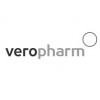Expiration date: 11/2026
The composition and form of issue:
Capsules 1 capsule contains:
azithromycin dihydrate (in terms of azithromycin) 250 mg
auxiliary substances: milk sugar corn starch Aerosil sodium lauryl sulfate magnesium stearate PVP
in a contour acheikova packing 6 or 10 PCs in the paper cartons 1 package or in the banks dark glasses for 6 or 10 PCs in the paper cartons 1 Bank.
Tablets, film-coated. 1 tablet contains:
azithromycin dihydrate (in terms of azithromycin) 500 mg
excipients: calcium phosphate dihydrate sodium lauryl sulfate povidone crospovidone magnesium stearate
shell: oksipropilmetiltselljuloza titanium dioxide povidone talc tween-80 (Polysorbate) dye acid red
in a contour acheikova packing 3 PCs the paper cartons 1 package or in the banks dark glasses 3 PCs the paper cartons 1 Bank.
Description of dosage form:
Capsules: hard gelatin capsules white color. The contents of capsules-a mixture of granules and white or white powder with a yellowish hue.
The coated tablets: light pink, oblong, biconvex shape. The cross-section view shows two layers: the inner layer is white or almost white.
Pharmacological action:
When creating in the focus of inflammation of high concentrations has a bactericidal effect.
Pharmacokinetics:
Stable in acid medium, lipophilic, rapidly absorbed in the gastrointestinal tract. Once inside the dose of 500 mg Cmax in plasma is 0, 4 mg/l and is reached after 2, 5-2, 96 h. Bioavailability is 37%. Well into the respiratory tract, organs and tissues of the urogenital tract (in particular, in the prostate gland), in skin and soft tissue. The concentration in tissues and cells is 10-50 times higher than in plasma, and in the foci of infection is 24-34% higher than in healthy tissues (correlates with the degree of inflammatory edema). Transported by phagocytes to the focus of infection, where it is released in the process of phagocytosis. The apparent volume of distribution of 31, 1 l/kg. High antibacterial level is maintained in the middle of inflammation within 5-7 days. Metabolized in the liver by demethylation to form inactive metabolites. Withdrawal takes place in 2 stages T1/2 is 14-20 h (in the range of 8-24 h after taking the drug) and 41 h (in the range of 24-72 h).
Description of the pharmacological action:
The spectrum of action is broad and includes gram-positive cocci: Streptococcus pneumoniae, Streptococcus pyogenes, Streptococcus agalactiae, Streptococcus groups CF and G, Staphylococcus aureus, Staphylococcus viridans, gram-negative bacteria Haemophilus influenzae, Moraxella catarrhalis, Bordetella pertussis, Bordetella parapertussis, Legionella pneumophila, H. ducreyi, Campylobacter jejuni, Neisseria gonorrhoeae, Gardnerella vaginalis, selected anaerobic microorganisms: Bacteroides bivius, Clostridium perfringens, Peptostreptococcus spp., as well as Chlamydia trachomatis, Mycoplasma pneumoniae, Ureaplasma urealyticum, Treponema pallidum, Borrelia burgdorferi. Inactive against gram-positive bacteria resistant to erythromycin.
Indications:
Upper (pharyngitis, tonsillitis) and lower (bacterial and atypical pneumonia, bronchitis) respiratory tract, ENT organs (otitis media, sinusitis), skin and soft tissue (erysipelas, impetigo, secondary infected dermatoses), urogenital tract (uncomplicated urethritis and / or cervicitis), Lyme disease (treatment of erythema migrans), diseases of the stomach and duodenum, associated with Helicobacter pylori (as part of combination therapy).
Contraindications:
Hypersensitivity (including to other macrolides), liver and/or kidney failure, breastfeeding, infant under 1 year of age.
Application during pregnancy and breast-feeding:
Perhaps, if the expected effect of therapy exceeds the potential risk to the fetus. At the time of treatment should stop breastfeeding.
Side effect:
From the nervous system and sensory organs: & le1% — dizziness, headache, drowsiness in children-hyperkinesia, anxiety, neurosis, sleep disorders.
Of the cardiovascular system and blood (hematopoiesis, hemostasis): &le1% — palpitation, pain in the chest.
From the digestive tract: diarrhea (5%), nausea, abdominal pain (3%) &le1% — dyspepsia, flatulence, vomiting, melon, cholestatic jaundice, increased liver transaminases in children — constipation, anorexia, gastritis.
On the part of the genitourinary system: &le1 % - vaginal candidiasis, nephritis.
Allergic reactions: rash, photosensitivity, angioedema.
Other: fatigue in children — conjunctivitis, itching, urticaria.
Drug interaction:
Antacids (aluminum and magnesium-containing), ethanol and food slow down and reduce absorption.
Increases the concentration of digoxin, slows down the excretion and increases the concentration in plasma and toxicity of cyclosporine, indirect anticoagulants, methylprednisolone, felodipine, carbamazepine, terfenadine, hexobarbital, alkaloids, valproic acid, disopyramide, bromocriptine, phenytoin, oral hypoglycemic agents, theophylline and other xanthine derivatives.
Lincosamide weaken the effectiveness of tetracycline and chloramphenicol enhance. Pharmacologically incompatible with heparin.
Method of application and doses:
Inside, 1 hour before or 2 hours after meals 1 time per day. Adults with infection of the upper and lower respiratory tract-500 mg / day for 3 days (course dose-1500 mg) in infections of the skin and soft tissues-1000 mg / day on the first day, then (2-5 days — - 500 mg/day (course dose-3000 mg) in acute infections of the genitourinary organs (uncomplicated urethritis or cervicitis) - 1000 mg once in Lyme disease (treatment of the initial stage-erythema-1000 mg) / day on the first day, then (2-5 days) - 500 mg / day (course dose-3000 mg) for gastric ulcer and duodenal ulcer associated with Helicobacter pylori, — 1000 mg / day for 3 days in the complex therapy. Children-10 mg / kg body weight for 3 days or on the first day-10 mg / kg, then 4 days for 5 mg / kg / day (course dose-30 mg / kg), in the treatment of erythema migrans-20 mg/kg on the first day, then (2-5 days) — 10 mg / kg.
Overdose:
Symptoms: severe nausea, temporary hearing loss, vomiting, diarrhea.
Precautionary measures:
In a joint application with antacids should take a break between taking drugs for at least 2 hours.



